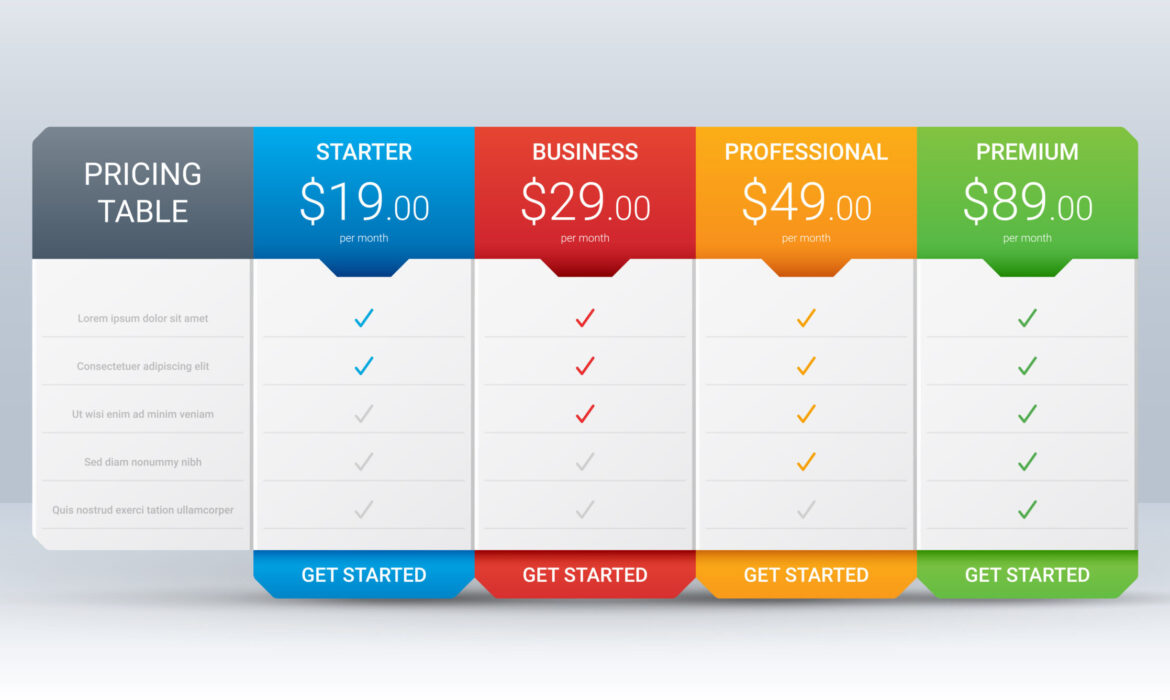Let Your Customers Drive Your Marketing
Your customers should be the driving force behind all the content you create. Whether blog posts, coupons, email campaigns or in-store posters, your consumers need to be at the heart of everything your brand does. Yet, many business owners fail to actually listen to what their consumers need and want.
Your customers are always communicating with you, whether it’s through positive words, reactions, or even a lack of engagement with what you have to say, this communication can be one of the most valuable assets you could ever have.
When you create marketing content, your customer is always foremost in mind. Many business owners have a well-established content plan, based on an avatar of their target audience. While this is immensely useful, it can actually drown out what your existing customers are saying right to your face. You might end up so focused on the
data, you could forget that your audience is sharing more with you.

You can supercharge your marketing content, connecting on an even deeper level with your consumership if you harness your listening power.
- Listen to your customers! Most business owners don’t blatantly ignore what their customers are saying, of course not, but they can often miss what a customer is trying to say. Take the time to actively listen to your customers, even if what they are talking about doesn’t seem relevant, or you don’t quite connect it with a problem you can solve for them. Take note of what they say, and go back over it again. In listening to your customers, you might discover patterns in what they want and need. You will be better equipped to create future content in keeping with those wants and needs.
- Ask questions! Don’t forget to ask questions. Your customers will be only too happy to answer them. You could ask more open-ended questions on social media that allow for a longer discussion, you could feature a voting poll with an option for people to add their own suggestions, or you could create surveys for more streamlined feedback. If you show your customers you are interested in hearing their opinions, they will share a wealth of information with you.
- Promote popular content! It can be tempting to share lots of fresh new content that you think will wow your audience, but if you haven’t been listening to them, it might not get the interaction you were hoping for. What does your audience engage most with, and why? Focus on promoting content that they want to see.
- Feature customer stories! A fantastic way to show your audience that you care about what they have to say is to feature a customer story in your content. This could be a blog post or social media post telling their story, or even interviewing them if they’re not too shy! Other customers will relate to this, and feel included, as it shows you are actively listening to your audience. You should also encourage testimonials which allow your customers to give a voice to your business. There is no greater validation for a company than when its consumers are willing to offer a great testimonial on its behalf.
- Create more! When your customer sees that you are creating content in response to their feedback, or that you’ve paid attention to what they’ve shown interest in, their trust in you grows more. Listen closely to them and find the content topics that your customers enjoy the most. You can take the same approach when creating ads. Perhaps you could create a special offer named for a regular customer. For example, you could run the “Lucy” special for a specified period of time, enticing new customers via a special discounted rate on one of your products or services.
The bottom line is that businesses are becoming increasingly customer-centric. Cost efficacy comes from investing into current customers in order to gain new clientele. Let your consumers speak for themselves and strategically build your marketing plan around them. They will thank you for it!
Use Humor to Build Trust
I bet you didn’t know that your sense of humor could be a valuable tool in your marketing arsenal when used correctly. Humor is a skill which can make your brand more relatable to your customers, acting as a means of building trust. In fact, a good sense of humor can often make all the difference in converting a browsing consumer to a lifetime customer. Everyone enjoys sharing a laugh and humor might be just the ticket to forming a stronger connection with your target audience.
Trust and laughter are intertwined as laughter is one of the most prominent physical signs of trust. Think about it. Would you laugh with someone who is threatening you? Obviously not. In addition, oxytocin, also known as the “bonding” or “trust” molecule, releases when you laugh.
Humor plays a prominent role in stress reduction, improved creativity, communication and the overall tone of your brand as well as your company’s culture. For example, a properly inserted joke has the power to show you are listening to your employees and customers. Furthermore, you are creating a memorable interaction via the element of surprise. A customer isn’t likely to expect you to have a sense of humor regarding one of your products which did not work out for them. A clean, humorous response shows consumers that you are good-natured and that you don’t sweat the small stuff. It also disarms a potentially tense consumer who might be frustrated that your product failed them.
Humor invites creativity. For example, you can lead with a comical riddle during your next brainstorming sesh with your employees. Open the session by asking your staff how they would save the world from flying elephants using a firehouse and a large bag of clementines. Be prepared to be amazed at some interesting responses and confused stares!

Everyone LOVES a funny story! Share your best, most relevant memories with your staff and consumers and incorporate your own personal animation. You can make almost any story hilarious in the way that you reiterate to your audience. The best part about a hilarious story is that there’s usually some analogy or purpose. Again, you are creating a memorable exchange between you and your customer who will now look forward to visiting your store again in the future. The REAL game changer is knowing that your customer now views a usual run-of-the-mill errand as an opportunity to laugh. Don’t be surprised if you start seeing more “regulars” popping into your store because it’s “on the way home”. They might actually enjoy being in your shop!
The bottom line is that trust equals reliability and if you can use humor to build trust with your consumers, it’s a win-win. Your customers will heavily rely on you because they trust you. Be open and honest with a humorous twist and your consumers will flock to engage with you!
Marlin Consulting Solutions Announced as a 2022 Local Excellence Award Winner by UpCity!
For more than a decade, UpCity’s mission has been—and continues to be—to help businesses find B2B service providers they can trust. The UpCity Recommendability Rating was developed to determine a service provider’s credibility and recommendability, giving UpCity the confidence to recommend them to the more than 2 million businesses that visit their site.
Each year, UpCity analyzes and scores more than 70,000 service providers based on their UpCity Recommendability Rating and acknowledges the top national and local providers with an UpCity Excellence Award. The results are in, and we won!
We are proud to announce that the Marlin Consulting Solutions team has been recognized as one of the top B2B service providers of 2022 in the Jacksonville area by UpCity!
Jen Gadus, VP of Product & Design at UpCity, had this to say about Marlin Consulting Solutions:
“Marlin Consulting Solutions embody everything that we stand for: trust, credibility, and accountability. The reviews speak for themselves, and we’re honored to recognize their team’s achievements today with a 2022 Local Excellence Award.”
—Jen Gadus, VP Product & Design, UpCity
This recognition has been driven in large part by our 5-star review rating on UpCity. Here are a few of our favorite pieces of feedback we’ve received from our incredible customers:
- “Marlin Consulting Group was very effective in helping us accomplish our marketing and reputation management goals. Their team is innovative and professional and has a great working knowledge of all marketing aspects. Our reputation score increased and so did our client base.” – Nancy K., October 2020
- “Marlin Consulting has been a great help getting our 3 websites more traction on Google. They took time to get to know our company and what our needs and concerns were regarding our web presence. I would recommend them to any business owner who needs help with Google Ad Words, or SEO.” – Lauren B., March 2020
Thank you to UpCity, our customers, and all of our family and friends for your support. We love what we do and it means the world to know that others do too!
3 Example of Effective Price Anchoring
Pricing is one of the most important factors you should consider as a business owner. Don’t make the mistake of failing to implement an effective price anchoring strategy! This could cost you your business, resulting in lost sales and customer dissatisfaction.
In a nutshell, price anchoring is the process by which your business establishes a price to which your customers can refer when pricing products or services. For example, Sally knows that the average cost of a surf ‘n’ turf dinner in Northeast Florida runs roughly $49.99. If she goes to your restaurant and sees a price tag of $99.99 for your surf ‘n’ turf meal, you can expect Sally might be startled and dissatisfied with your brand. All of your customers are just like Sally. They don’t want to be ripped off. They want to feel that they’ve found a bargain and they want to feel confident they’ve made the right purchase from the right company.

While your own price anchoring strategy will depend largely upon the type of business you own and the products and services your offer, I am going to show you three of the most common ones:
Package Comparison: the process of developing an ideal price for your company products or services. In this strategy, you would devise a package highlighting certain benefits and features. You would also go on to develop a slightly cheaper package with fewer benefits and a slightly pricier package with only a couple of perks. The idea is to drive your customers to the middle package that offers the greatest bang for the buck. You come out looking like a rockstar, offering your customers the most ideal package at a cheaper price. They feel they are getting the greatest value! You are leading your consumer base directly to the ideal product or service you desire to sell at the exact price point at which you want to sell it! It’s a win-win situation!
Retail comparison: the process of showing the crossed out retail price on a product page. This is probably one of the most common examples of a solid price anchoring strategy. In this situation, you would list your product or services on your company website along with the crossed out average retail price (or price range) a consumer could realistically expect to pay. You then list what you are going to charge your customers for the same product or service, obviously at a more competitive price. For example, you might offer two products for the price that your competitor would normally charge for one. As long as you are offering the same quality and benefits to back up your product, you will leave your customers feeling confident they’ve made the best, most cost effective choice in purchasing from you.
Reduce Pain Points: the process of reducing “pain points” in order to increase after-purchase customer satisfaction and retention. This isn’t as complicated as it sounds. According to neuroeconomics, our brains are actually wired to spend until it hurts. This means consumers will cease spending when they think the pain of doing so is greater than the gain of doing so. For example, your store might be running a special on firepits. The catch is that you don’t deliver and these things weigh more than a pregnant elephant. Your consumers might decide that, despite your excellent prices, it’s too much of a pain to haul a cheap fire pit out of your store and back to their homes. They’d much rather pay more to your competition who offers delivery service. At the end of the day, one of your strongest price anchoring components will be eliminating stressors from consumer purchases. Consider throwing in delivery for a small fee or offer shipping. While “no pain, no gain” doesn’t really work in the mind of a consumer, that’s exactly what you ought to be thinking in your business-owning mind. At the end of the day, your customers will value your company even more because you cared enough to accommodate their needs.
You’re a business owner; the captain of your ship. Be intentional with your price anchoring strategy because quality should be priced purposely. You can develop your prices overtime with thoughtful deliberation of consumer feedback, but think strategically and you are sure to reap the benefits!
Helping Your Customers Understand Your Process
Regardless of the nature of your business, you’ve probably experienced at least one awkward conversation with a customer who just didn’t understand your process. While it might feel as though you’re being challenged, try not to take it personally. View the conversation as an opportunity to educate your confused customer because that which feels like nit-picking is usually the result of misinformation OR not enough access to info adequately explaining your process. As in all relationships, communication is key and if customers feel educated about your process, services and products, they won’t feel the need to question your expertise.

Clear processes equal less awkwardness and more sales. There is a way to educate your customers without boring them to death and service pages are a great place to start! A website service page is dedicated to the explanation of what your company does and why you are the leading expert in the business. In other words, your service page will explain the solution to a consumer’s problem. Consumers feel reassured when they see the solution clearly spelled out for them and how you intend to go about achieving said solution. Here are some of the things your consumers will look for on your service page:
- Benefits and features.
- Testimonials.
- Connection with consumer pain points.
- Plain language, not technical jargon.

With the surge in online shopping over the last two years of home-bound COVID-19 life, your product page is now a more vital component of the consumer experience than ever before. With everything from groceries to in-home services now being purchased online, you really need to step up your game in ensuring your product page presents the best digital storefront possible. Consider the following tips as you contemplate the revitalization of your product page:
- Emphasize price drops!
- Use verbiage such as, “Hurry! Low in stock” to create a sense of urgency for your customers.
- Use social proof such as reviews and comments.

Regardless of how excellent your product page might be, customers will always have basic questions. A solid FAQs page can go a long way in meeting customer expectations and clearly communicating what you can do for them and your process for handling their questions and concerns. In addition, a great FAQs page can decrease the amount of telephone support needed to answer questions, saving you both time and money. Enjoy increased website traffic because of the accessibility of your FAQ’s page as well as heightened trust from your customers. Your FAQ’s page should:
- Be easy to find.
- Consist of questions written from a customer’s viewpoint.
- Fully answer questions without linking to an additional page.
- Consist of short answers beginning with “yes” or “no”.
- Contain answers reflecting your brand personality.
- Be written in the language of your consumers and not professional mumbo jumbo.

Don’t forget to maintain a continuous conversation with your customers. Blog posts are a great means of educating your customers while simultaneously sharing about your process more in depth. Blog posts have a way of spreading the word about your brand much faster than you ever could when they are shared on social media platforms. Maintaining scheduled posts, sharing links and posting videos offers a great means of interacting with consumers, establishing a core following and answering questions in a way which enables you to be more present with your customers in the digital age. The main goal of any entrepreneur is to establish and maintain solid business relationships and there is no better way to do so than by fostering open-ended conversations with your customers. At the end of the day, your customers want to know you understand what they want and need and you shouldn’t feel threatened at having to explain yourself. Your business depends on it!
5 Ways to Keep Your Website Content Fresh
Feeling a bit stale lately? Is your website content a tad outdated? Are your blog posts still relevant to your central marketing message?
If you are boring yourself to sleep perusing your own business website, then this post is for you! Here’s the bottom line: fresh, relevant content which accurately reflects the theme of your marketing strategy helps to build trust between you and your customers! You can’t afford to let your content go stale and maintaining a fresh approach isn’t as hard as it might seem.

Language plays a HUGE role in the maintenance of fresh content. Cultural lingo changes with the wind and what was once considered “righteous” is now deemed “cool”. Words are powerful and if you’re not speaking the language of your people (a.k.a your customers), you are automatically dating yourself and age is so much more than a number in this particular case. In addition, today’s language style has been redefined as one of inclusivity. With all of the social changes occurring regarding gender equality, for example, you need to ensure that your content speaks to your entire audience and that you aren’t inadvertently excluding or alienating customers with your material.
Jokes which were socially appropriate ten years ago are not likely to be acceptable in today’s age of enlightenment. Whether you subscribe to this philosophy or not is moot. Your business needs to be adaptable to social changes and the desires of your consumers regardless of your personal preferences and your website content needs to reflect current relevance.
While no one is trying to insult your intelligence by stating the obvious, CHECK YOUR DATES! The truth is that many business owners fail to change the dates on refreshed or recycled content. In other words, if you are planning to pull an old blog post from out of your “file” because the content is still relevant, for Pete’s sake, change the date! There is nothing worse for a new prospective customer who thinks they’ve found the answer to their problems in one of your posts only to discover the content is dated November 3, 1982. This leaves the consumer highly doubtful that the content is still relevant and they will move on to your competition who has updated material posted on their website. I can attest to this personally. Christmas shopping was rough for me when I discovered that a major 50% offer on a website expired the previous year. I won’t be doing business with THAT company. Consumers believe that true professionals don’t make rookie mistakes!
This might seem off topic, but when was the last time you watched the news or read the paper? Asking for a friend… Seriously, though, do you even know about the latest change to your entire industry? Are you up-to-date on new services and products you should be offering and have you taken any refresher courses or undergone updated training? The most successful business owners understand that it’s crucial to stay in the know and that lifelong learning is fundamental to a successful, booming business.
A simple perusal of Google can go a long way in keeping you apprised of new developments in your field which will impact your website content. Nothing says “I know my stuff” like a business owner who boasts about the newest trends in their field of expertise. Afterall, this is exactly the kind of material consumers long for! They want to achieve expert status, too! Perhaps you should set aside time each day to check out the local paper or consider a subscription to a magazine which is relevant to your field of expertise. Stay in the know!
Update those links! God may have blessed the broken road, but He cannot abide a busted link leading straight to nowhere! Okay, maybe we should leave religion out of this, but the point stands! Blog posts can be racked with broken links and nothing deters consumers like brokenness.
Broken links automatically place your website at a disadvantage by wrecking the customer’s experience with your brand and destroying your rank on search engines such as Google. The greater the amount of broken links on your website, the greater your status will plummet in search engine rankings.
I know I said I’d leave religion out of this, but it’s time to ask, “What would Jesus do?” The answer: He’d fix what’s broken. God bless!
4 Necessities for Email Marketing
Digital marketing platforms are ever-evolving, and you might be questioning whether or not email marketing is worth your time and effort. You might feel the process is complicated and, simply put, boring! However, email marketing is a crucial strategy for successfully keeping your target audience in the know while boosting sales









